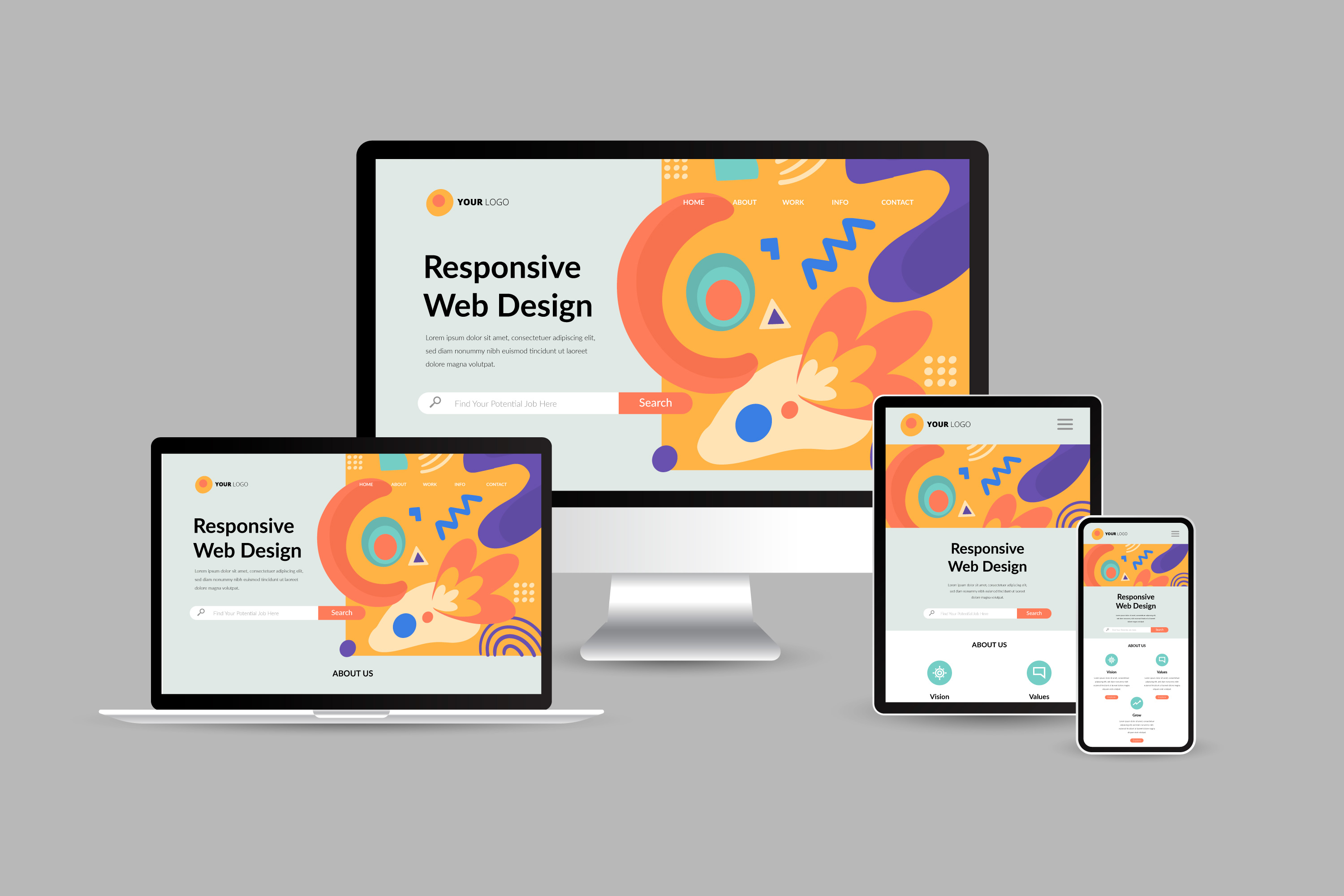Achieve Online Success With User-Friendly Website Style
In the significantly affordable electronic landscape, the layout of an internet site can be a crucial element in establishing a business's success. Easy to use style not just boosts the total customer experience but also influences crucial metrics such as conversion, retention, and involvement rates.
Value of Customer Experience
Customer experience (UX) plays a critical function in the success of a web site, as it straight affects customer contentment and involvement. A favorable UX guarantees that visitors can browse the site effortlessly, accessibility info swiftly, and total desired activities, such as making an acquisition or authorizing up for a newsletter, without disappointment.
In a digital landscape where competition is intense, a site that prioritizes UX can substantially improve brand commitment and retention. Individuals are much more most likely to go back to a website that supplies a smooth experience, producing a cycle of repeat brows through and raised client lifetime value. Furthermore, reliable UX layout can lower bounce rates, as individuals are less inclined to leave a website that meets their demands efficiently.
Furthermore, search engines progressively think about individual experience elements when ranking websites. Therefore, investing in customer experience is essential for attaining long-lasting success in the electronic market.
Secret Concepts of User-Friendly Design
An effective easy to use layout rests on several essential principles that enhance functionality and accessibility. Primarily is simplicity; a clutter-free interface enables customers to browse easily, lowering cognitive load. This principle stresses the relevance of clear and concise content, allowing users to locate info swiftly without unnecessary interruptions.
Consistency is an additional crucial element. Regular use of layouts, colors, and font styles fosters knowledge and develops depend on. Users should really feel comfortable as they discover various areas of the website, recognizing that similar components symbolize related capabilities.
Efficient typography also plays a vital duty in easy to use layout. Readable typefaces, proper sizes, and ample spacing make sure that content is conveniently understandable across different devices. Including user-friendly visual hierarchies assists users recognize key info and activities at a glimpse.

Crucial Functions for Navigating
Reliable navigation is crucial for any user-friendly web site, as it directly affects the overall user experience. A well-structured navigating system allows individuals to situate info rapidly and efficiently, lowering disappointment and increasing engagement.
One vital feature is a instinctive and clear food selection that classifies web content rationally - website design copyright. This food selection must be quickly available from every web page, often positioned at the leading or on the side of the site. Furthermore, incorporating breadcrumb navigating assists customers understand their area within the website pecking order and makes it simpler to backtrack
Browse performance is an additional important part, look at this site enabling customers to discover certain web content without filtering with numerous web pages. This feature ought to be prominently shown and receptive to variants in input.
In addition, a mobile-responsive design makes certain that navigating stays smooth across devices. As mobile usage remains to climb, menus ought to adjust to different display dimensions without endangering functionality.
Last but not least, aesthetic signs such as highlighting the energetic page and using hover impacts can improve individual interaction. By integrating these crucial features, website designers can develop a navigational experience that is not just easy to use yet also motivates expedition and retention.
Ease Of Access Considerations
Accessibility considerations are indispensable to developing a straightforward website that accommodates all people, no matter their abilities or specials needs (website design copyright). Websites have to be made to guarantee that individuals with visual, auditory, cognitive, or electric motor disabilities can involve with content properly. This starts with adherence to the Web Web Content Accessibility Guidelines (WCAG), which supply a framework for making digital material extra available
Secret practices include using detailed alternative message for pictures, guaranteeing shade contrast ratios meet accessibility standards, and supplying captions for multimedia aspects. Furthermore, the navigation must be instinctive, enabling customers to tab with links and interactive elements easily. Implementing key-board navigating is vital for those not able to make use of a computer mouse.
In addition, clear and succinct language enhances understanding for users with cognitive limitations. Kinds must be uncomplicated, with labels and instructions that are understandable. Regular access screening, consisting of user feedback from people with specials needs, can assist recognize obstacles and improve functionality.
Determining Style Success

User responses studies and usability testing are vital in examining the efficiency of design components. These methods allow designers to collect straight input from individuals, determining discomfort factors and locations for renovation. Furthermore, tracking heatmaps can expose where users click most regularly, helping to educate design modifications and content prioritization.
Google Analytics can track user habits, disclosing patterns that suggest whether the style is preventing the customer or promoting journey. Ultimately, an effective site style not only satisfies business goals yet also fosters a smooth and pleasurable customer experience, driving interaction and commitment over time.
Final Thought
Focusing on individual experience with simplicity, instinctive navigating, and efficient responses systems not only boosts individual involvement and fulfillment yet additionally fosters brand name commitment. Including necessary navigation attributes and ease of access factors to consider additionally guarantees that all users can effectively engage with the site.
Websites need to be developed to guarantee that customers with aesthetic, auditory, cognitive, or motor impairments can engage with content efficiently.Gauging style success involves examining how properly a web site meets its desired goals while supplying a favorable individual experience. Google Analytics can track customer actions, revealing patterns that suggest whether the design is helping with or hindering the customer trip. Ultimately, an effective web site design not just meets organization purposes however additionally fosters a seamless and pleasurable user experience, driving involvement and commitment over time. Focusing on customer experience through simplicity, user-friendly navigation, and reliable responses systems not only boosts user interaction and fulfillment but likewise cultivates brand name loyalty.